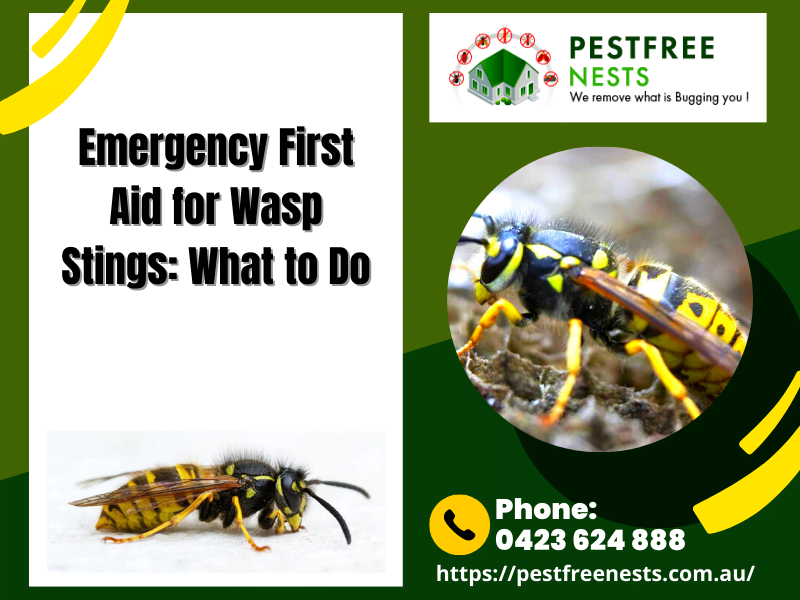It’s a beautiful day, and you’re out in your garden enjoying the sunshine. Suddenly, you feel an intense pain on your skin, followed by a burning sensation that just won’t quit. You look down and see it – a wasp sting! Panic sets in as you wonder what to do next. But fear not! With our emergency first aid guide for wasp stings from the experts for wasps control in Melbourne, you’ll know exactly what steps to take to keep yourself safe and alleviate the pain quickly. So let’s jump right in!
Understanding the Different Types of Reactions
There are two types of reactions that can occur after a wasp sting: local and systemic. A local reaction is restricted to the area around the sting, while a systemic reaction occurs when the venom spreads throughout the body.
Systemic reactions are more serious and can be life-threatening. Symptoms of a systemic reaction include swelling of the face, lips, or tongue; difficulty breathing; wheezing; hives; coughing; and nausea or vomiting. If you have any of these signs, promptly go to the doctor.
Most people will have a local reaction to a wasp sting, which typically includes redness, swelling, and pain at the site of the sting. These symptoms usually resolve within a few hours. However, some people may develop an allergic reaction, which can range from mild to severe.
What to Do for Immediate Relief
If you or someone you’re with is stung by a wasp, there are a few things you can do for immediate relief:
- Rinse the sting site with cool water. This will help to remove any venom that may be present and will also help to soothe the skin.
- Apply a cold compress to the area. This will help to reduce swelling and pain.
- Take an antihistamine if you have one handy. This can help to relieve itching and swelling.
- If you have any welts or hives, try applying a mild calamine lotion to the area. This can help to soothe the skin and reduce irritation.
How to Prevent Future Wasp Stings
If you’ve been stung by a wasp, the first thing you should do is apply ice to the area to reduce swelling. You can also take an antihistamine to help with any itching or pain.
The experts for wasps control in Melbourne agree that to prevent future stings, it’s important to be aware of wasp nests on your property and to avoid them if possible. If you see a wasp flying around, be sure to keep your distance and avoid swishing your arms around, as this can trigger an attack. Wearing light-coloured clothing can also help deter wasps, as they are attracted to dark colours.
Wasp stings can be extremely painful, but with the right knowledge and understanding of first aid for wasp stings, you can quickly help yourself or someone else. Understanding the signs and symptoms of an allergic reaction is key to giving the correct treatment at a time when it matters most. We hope we at Pest Free Nests have provided helpful information so that if you ever find yourself in a situation where someone needs emergency first aid for a wasp sting, you’ll know exactly what to do.

